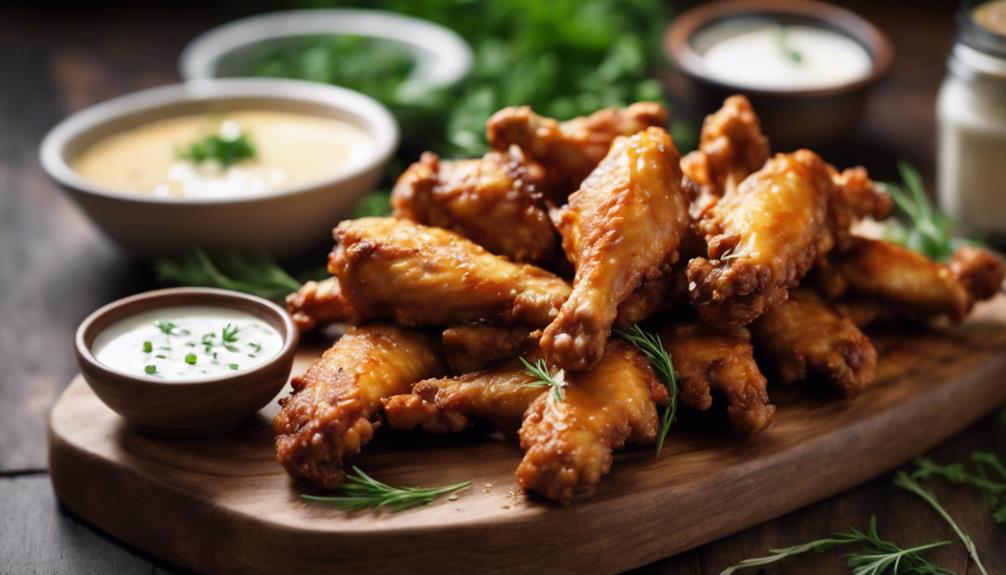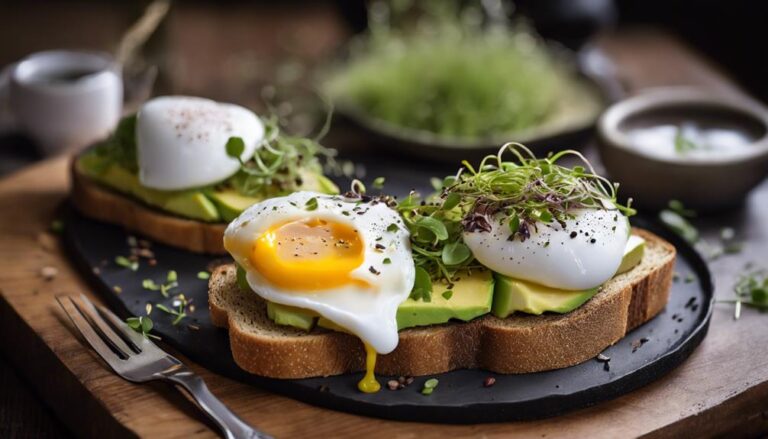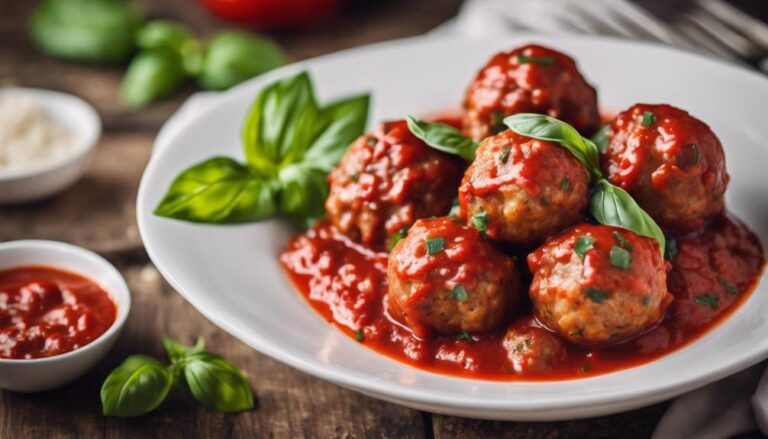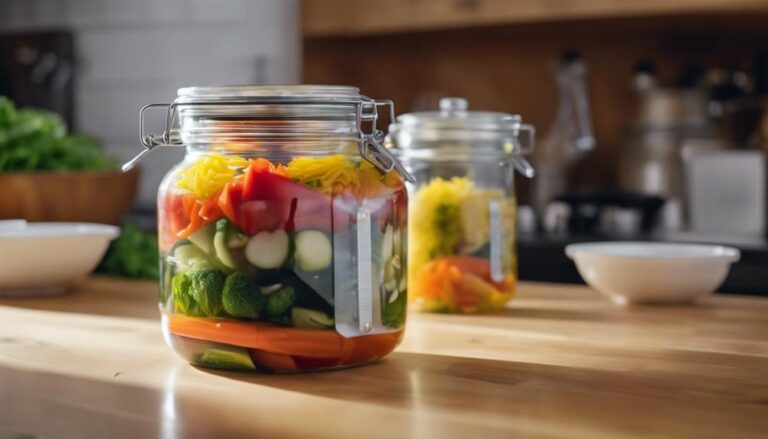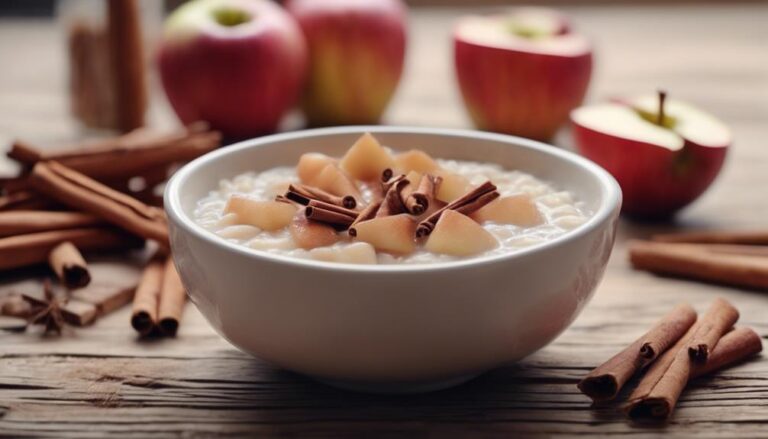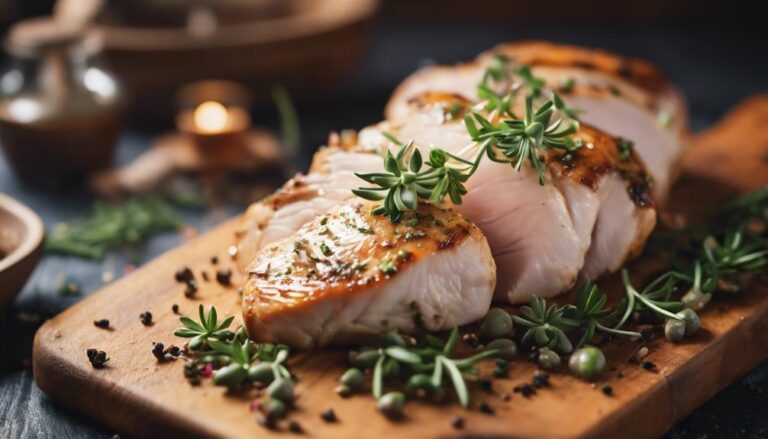Two-Point Crispy Sous Vide Chicken Wings
For irresistible two-point crispy sous vide chicken wings, you'll start by vacuum-sealing your wings with savory spices. Sous vide them at 156°F for a perfect, tender texture inside. Don't forget a light coat of cornstarch pre-cook to guarantee that ultimate crunch. After sous viding, choose a high-heat finish like broiling or air frying to achieve a beautifully caramelized, crispy exterior. Opt for a tantalizing sauce to toss them in post-crisping, enhancing every bite. Perfecting this method guarantees wings that are consistently succulent inside and addictively crispy outside. Ready to transform your kitchen into a flavor festival? Let's explore more wing wonders.
What You Will Learn Here
- Sous vide cook chicken wings at 156F/69C for 1 1/2 hours for tender, evenly cooked meat.
- Season wings with salt, pepper, and optional spices before vacuum sealing.
- After sous vide, coat wings in cornstarch for crunchiness.
- Finish wings by deep frying, air frying, or broiling to achieve a crispy exterior.
- Experiment with different sauces like Buffalo or Korean-style for flavorful finishing touches.
Origins of Sous Vide Cooking
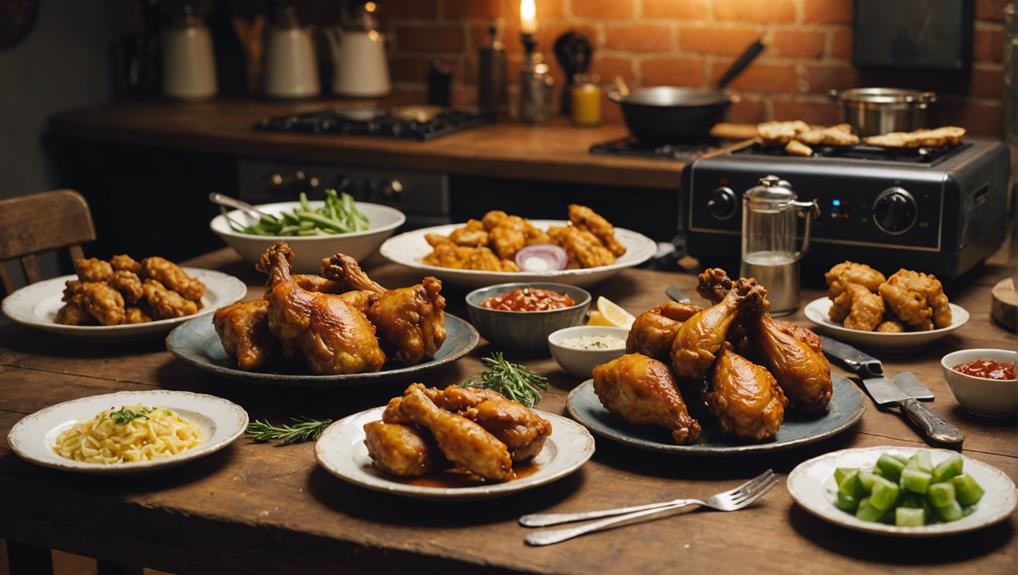
You're about to uncover the rich history of sous vide, a technique perfected in the 1970s that revolutionized culinary standards.
Starting in France, chefs like Georges Pralus harnessed this method to cook foie gras with unprecedented precision, sealing in flavor and achieving consistent textures that were once elusive.
As sous vide's popularity soared, it paved the way for its integration into both professional kitchens and home setups, allowing you to enjoy gourmet-level dishes like crispy chicken wings, cooked to perfection every time.
Historical Sous Vide Beginnings
Sous vide cooking, a technique that originated in the 1960s in France, was pioneered by Georges Pralus, primarily for the preparation of foie gras. This method, meaning 'under vacuum,' involves sealing food, like wings, in a sous vide bag using a vacuum sealer.
You then cook them in a water bath at a precisely controlled temperature, facilitated by an immersion circulator. This approach not only preserves flavors but also guarantees crispy skin while breaking down connective tissue without overcooking.
The displacement method, a technique where air is pushed out of a bag by submerging it in water, further ensures even cooking. Sous vide cooking has transformed how meticulous chefs and home cooks achieve culinary perfection.
Sous Vide Evolutionary Path
Delving into the origins of sous vide cooking, it's clear that this culinary revolution began in 1960s France, aimed at enhancing flavor preservation through precise temperature control. Chef Georges Pralus, a pioneer, harnessed vacuum-sealed bags to guarantee consistent results, essential for professional kitchens. Now, let's look closer at this method's key features:
| Feature | Benefit |
|---|---|
| Vacuum-sealed bags | Enhances moisture retention and flavor |
| Precise temperature | Ensures even cooking and quality |
| Chef Georges Pralus | Innovator of sous vide for consistency |
| Professional kitchens | Adopted for reliable, restaurant-quality |
As you explore sous vide, you're embracing a technique perfected to serve others with exceptional, flavorful dishes, whether in bustling restaurant environments or in your own kitchen, aiming for that professional touch.
Modern Culinary Applications
Many modern kitchens now harness the sous vide method, initially crafted by Georges Pralus, to guarantee meats and vegetables are cooked with unparalleled precision and flavor retention.
This modern culinary technique involves vacuum-sealing Sous Vide Chicken Wings, or any other delicacy, and submerging them in a water bath.
The precise temperature control guarantees that the food cooks evenly, maintaining a tender and juicy interior while readying for a final crisping step to achieve that sought-after crispy texture.
Essential Sous Vide Ingredients
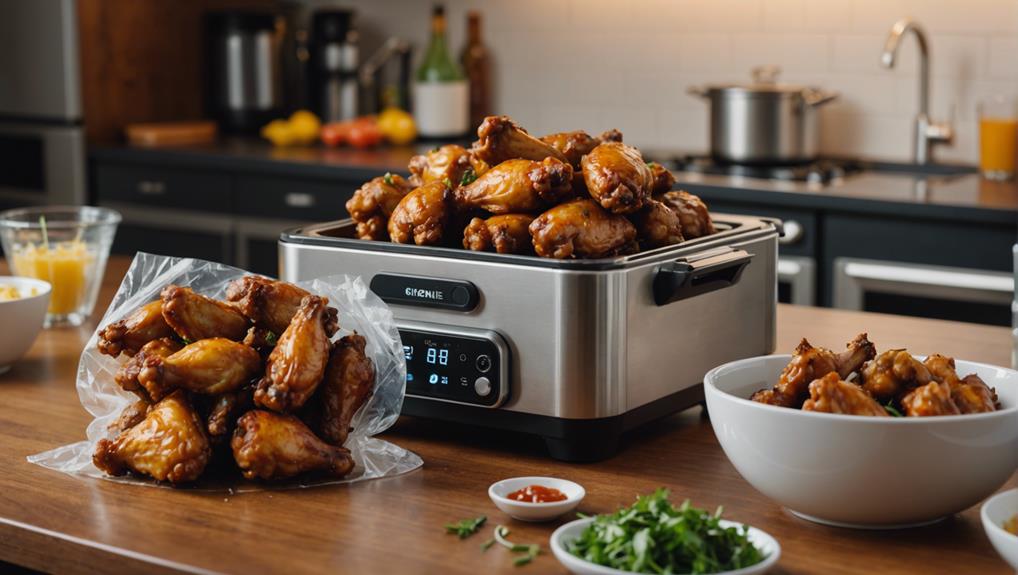
To achieve the ultimate crispy finish on your sous vide chicken wings, you'll need key ingredients such as chicken wings, salt, pepper, cornstarch, your favorite sauce, and oil for frying. When you prepare to impress your guests with these delectable delights, each component plays an essential role in transforming ordinary chicken wings into a crispy, flavorful feast.
Here's how you should orchestrate these ingredients:
- Chicken Wings: Opt for split chicken wings for easier cooking and a more uniform texture.
- Seasoning: Generously season the wings with salt and pepper before placing them in a sous vide bag. This initial seasoning is important as it deeply infuses the chicken with flavors during the sous vide cooking process.
- Cornstarch Coating: After cooking the chicken in your sous vide setup for the necessary minutes and allowing them to air-dry on paper towels, coat them lightly in cornstarch. This step is key for achieving that satisfying crunch.
- Sauce and Frying: Post-sous vide, toss the wings in your chosen sauce for that burst of flavor, then fry them in hot oil to lock in the taste and crisp up the exterior beautifully.
Top Sous Vide Dishes
As you explore the top sous vide dishes, consider the rich flavors and textures that Buffalo, Korean-style, and Lemon Garlic chicken wings can offer. Each recipe utilizes the sous vide method to guarantee the meat is perfectly tender before finishing with a crisp exterior.
You'll find the Buffalo wings tangy and spicy, the Korean-style wings sweet with a hint of heat, and the Lemon Garlic wings invigoratingly aromatic, each bringing a unique twist to your table.
Buffalo Chicken Wings Recipe
You'll find that preparing Buffalo chicken wings with a sous vide method elevates their succulence and locks in that fiery, tangy flavor you love. Here's how to make them:
- Sous Vide the Wings: Cook the wings at 165°F for 2 hours using your sous vide setup. This guarantees your wings are tender and juicy.
- Prepare the Buffalo Sauce: Mix hot sauce, butter, vinegar, and a pinch of garlic powder. Adjust the spice to taste.
- Toss and Broil: After sous vide, dry the wings, toss them in the buffalo sauce, then broil until the skin crisps up.
- Serve with Dipping Sauce: Present these spicy, crispy wings with a cooling dipping sauce like blue cheese or ranch.
Perfect for your next game day gathering!
Korean-style Chicken Wings Recipe
While Buffalo wings bring the heat, Korean-style chicken wings offer a sweet and spicy twist that's equally tantalizing. You'll revel in the juicy, tender morsels made flavorful through sous vide cooking.
Here's how to prepare them:
- Sous Vide Preparation: Cook the chicken wings sous vide at 156F/69C for 1 1/2 hours to make sure they're tender and juicy.
- Make the Sauce: Blend gochujang paste and maple syrup to create a uniquely Korean-style sauce that coats the wings with a glossy, spicy-sweet finish.
- Choose Your Finish: Opt for grilling or broiling to add a crispy texture that contrasts beautifully with the tender meat.
- Make-Ahead: Prepare and store these wings in advance, ensuring you can serve a delicious meal anytime, effortlessly.
Lemon Garlic Chicken Wings Recipe
Let's explore making Lemon Garlic Chicken Wings, a top sous vide dish that combines the zesty punch of lemon with the deep, aromatic essence of garlic to elevate your culinary experience. Using the sous vide technique, you'll guarantee these wings are tender, juicy, and packed with flavor. Here's how to captivate your guests with this dish:
- Marinate the wings in a mixture of fresh lemon juice, minced garlic, and herbs for a citrusy, herbaceous profile.
- Sous vide the chicken at 165°F for 2 hours to infuse the savory, garlic-lemon flavors deeply.
- Sear the wings post-sous vide to achieve that irresistible crispiness.
- Serve with lemon wedges and a sprinkle of fresh parsley for an elegant presentation.
Sous Vide Wing Techniques
As you explore sous vide wing techniques, you'll find that setting your cooker to the ideal temperature of 150°F for 2.5 hours is essential for tender yet firm wings.
After sous vide cooking, finishing methods like deep frying with a dusting of cornstarch guarantee that crispy, golden exterior you crave.
To further enhance the flavor, consider vacuum-sealing your wings with a mix of your favorite spices and herbs, locking in all the savory juices.
Optimal Cooking Temperatures
Discovering the ideal sous vide temperature for your chicken wings can enhance their flavor and texture. Temperatures ranging from 156F/69C to 176F/80C offer different degrees of tenderness and crispiness. When you explore sous vide recipes, it's important to pinpoint best cooking temperatures that yield tender and flavorful wings.
Cooking at 156F/69C for 1 1/2 hours, for instance, can produce exceptionally tender Korean-style wings. The sous vide method guarantees even cooking, ensuring every wing is uniformly succulent. Don't hesitate to experiment with temperatures within this range to find the perfect balance that satisfies your taste.
This technique, combined with a suitable finishing method, promises wings with a delicious crispy exterior that you'll be proud to serve.
Finishing Methods Explored
After sous vide cooking, selecting the right finishing method is essential to achieve the crispy, flavorful exterior that makes chicken wings irresistibly delicious.
Deep frying is your go-to for the crispiest skin paired with tender meat. If you're leaning towards a healthier option, consider air frying to maintain that crispy texture without excess oil.
For those who cherish a smoky hint, grilling adds a unique char and flavor to the wings. Pan frying offers a quick, easy solution to crisp up your chicken wings efficiently.
Alternatively, broiling provides a caramelized finish with a deliciously crispy exterior. Each of these finishing methods enhances your sous vide chicken wings, ensuring they're a hit at any gathering.
Flavor Enhancement Tips
To maximize the taste and tenderness of your sous vide chicken wings, season them before sealing in the vacuum bag. By vacuum sealing, you're ensuring an even distribution of the seasonings, which penetrates deeply into the meat, enhancing both flavor and texture.
Consider marinating the wings in the vacuum-sealed bag for at least an hour; this step is essential for best flavor infusion. Don't hesitate to experiment with various herbs, spices, and aromatics like garlic or ginger to tailor the wings to your guests' preferences. These additions contribute greatly to the depth of flavor.
When done correctly, this method not only maintains the tenderness of the wings but also sets the stage for achieving that desired crispy skin after finishing.
Final Thoughts
Crispy sous vide chicken wings masterfully combine tender, evenly cooked meat with a delightfully crisp exterior. Through the precision of sous vide cooking, you can achieve consistent results that guarantee each wing is succulent from edge to edge. By experimenting with different finishing methods, such as deep-frying or grilling, you can elevate the texture to that perfect crunch that makes these wings so irresistible. This flexibility means you can tailor each batch to suit your guests' preferences, making every dining experience uniquely enjoyable.
Moreover, sous vide chicken wings offer make-ahead options that are ideal for convenient meal prep. You can cook them in advance, store them properly using the storage tips provided, and simply finish them off before serving. This approach not only saves you time but also helps in managing a busy kitchen effectively.
The nutritional information available allows you to tweak the recipe variations to better fit dietary needs without sacrificing flavor. Whether you're catering to a low-carb audience or someone on a gluten-free diet, you can adjust the ingredients and still serve up wings that are both nutritious and satisfying.
Frequently Asked Questions
How Do You Crisp Wings After Sous Vide?
To crisp wings after sous vide, pat them dry, season generously, and choose a high-smoke point oil. Air fry or broil, flipping often. Finish with a glaze and serve with your favorite sides.
How Do You Get Crispy Skin on Sous Vide Chicken?
To achieve crispy skin on sous vide chicken, pat the skin dry and score it. Use baking powder and seasoning for flavor, then air dry in the refrigerator before broiling with oil brushed on.
What Is the Best Temp for Sous Vide Chicken Wings?
For sous vide chicken wings, you'll find 160F ideal for tender results. Marinate before vacuum sealing to infuse flavors deeply, consider seasoning variations, and pair with complementary sauces for an exceptional dining experience.
What Is the Secret Ingredient to Crispy Wings?
The secret ingredient to crispy wings is cornstarch. It absorbs moisture, ensuring a crunchy, light exterior. For added flavor, consider spice rubs or marinades before the cornstarch application and finish with deep frying.
Conclusion
Now that you've mastered the art of sous vide, your chicken wings will be the envy of every gathering. Imagine biting into wings that are perfectly crispy on the outside while remaining irresistibly tender and juicy on the inside.
The precise temperature control of sous vide guarantees every bite is flawlessly cooked. Finish them off with a quick sear to achieve that delightful crunch.
So, go ahead, indulge in this culinary masterpiece and watch your guests marvel at every flavorful bite!
